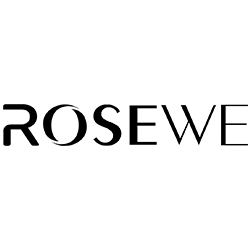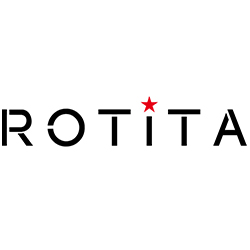The nation’s top public health authority warned of “impending doom” for the United States, and President Biden implored states to reinstate mask mandates on Monday, amid signs that a fourth wave of the pandemic is swelling, and even the Bay Area may be at risk.
Nationwide, coronavirus cases have climbed 10% over the past week, to about 60,000 a day, said Dr. Rochelle Walensky, director of the Centers for Disease Control and Prevention. Hospitalizations for COVID-19 are increasing, too.
The tide may also be rising in the Bay Area, where cases have plateaued in recent days. “The curve has flattened, but this is a curve you don’t want to see flattened,” said Dr. Matt Willis, the Marin County health officer, in an interview Monday. Willis said he feared a lull like the one that occurred between the summer and winter surges may again be happening now
Napa County officials said they may not move to the less restrictive orange tier in the state’s reopening structure as expected on Tuesday, after infections in the county increased somewhat. As recently as Friday they had said the trends were favorable for the county to advance to orange.
Public health experts say it’s too soon to predict whether the United States is facing an inevitable fourth surge, and if there is another spike in cases, whether the Bay Area will be able to fend it off with an aggressive campaign of vaccinations and protective behaviors like wearing masks and avoiding social gatherings.
Dueling forces are in play. Variants that are more infectious and lead to faster spread of disease have footholds in wide swaths of the country, including the Bay Area, where the California-bred variants are presumed to make up the bulk of cases. But vaccination efforts are ramping up fast, potentially reducing the pool of people susceptible to disease by millions every day in the United States.
Behavior is a third factor. As more of the economy opens up — nationally and locally — people are interacting more and taking fewer precautions. Public health experts say travel and large gatherings are particularly concerning, especially with so many young people partying over spring break.
They’re also worried about families and friends coming together for Passover and Easter. Past holiday gatherings have been major drivers of fresh waves of cases.
“We have so much to look forward to, so much promise and potential of where we are, and so much reason for hope. But right now I’m scared,” Walensky said in a White House briefing during which she reflected on a “recurrent feeling of impending doom” for the weeks ahead.
At the briefing, Biden pleaded with governors and local leaders to maintain or reimpose mask mandates, after about a dozen states dropped them when cases began to fall. “Please, this is not politics,” he said. “The failure to take this virus seriously, precisely what got us into this mess in the first place, risks more cases and more deaths.
“As I do my part to accelerate the vaccine distribution … I need the American people to do their part as well,” Biden said. “Mask up. Mask up. It’s the patriotic duty. It’s the only way we ever get back to normal.”
Cases in the Bay Area and California were down slightly last week over the week before, but have plateaued or skipped up over the past few days. The Bay Area reported on average 416 cases a day for the week that ended Sunday, which is comparable to cases from last October, during what, in hindsight, was an obvious trough between the summer and winter surges.
Willis said that although half of Marin County adults have received at least one dose of vaccine, that still leaves a large group of people susceptible to infection. And he’s seen across the county people relaxing protective behaviors, especially around social gatherings.
County officials said they’re eager to open up vaccinations to all comers on April 15, though many say they continue to have concerns about supply. In the meantime, they worry that younger people who won’t be eligible for vaccines for another two and a half weeks are also most likely to abandon social distancing practices.
“There are enough (susceptible) people to fuel more outbreaks,” Willis said. But he added that with vaccinations so far focused on older people and others more vulnerable to serious illness and death, the Bay Area probably won’t see an associated spike in hospitalizations and deaths even if cases do climb again.
Dr. Art Reingold, an infectious disease expert at UC Berkeley, echoed that assessment, though he said it’s not yet guaranteed that deaths and hospitalizations will stay low even as cases rise in a fourth surge.
The next few weeks likely will be the first large-scale, real-world test of the vaccines in the United States, he said, assuming state and local leaders continue to reopen the economy and individuals don’t improve their behavior.
“If in fact it’s mostly young people having parties on spring break getting infected, and a lot of older people are immunized, we might see increases in cases without seeing a huge increase hospitalizations or deaths,” he said. “We will find out in a few weeks.”
A further fear is that a fourth surge in California would likely, once again, disproportionately impact communities of color, said Dr. Kirsten Bibbins-Domingo, vice dean for Population Health & Health Equity at UCSF. California has one of the worst rates in the country so far when it comes to vaccine equity, meaning hard-hit, vulnerable communities are not yet getting fair access.
If there’s another surge, those communities likely will bear the brunt of it, while wealthier, more privileged parts of the state are protected by vaccines.
“The entire Central Valley is undervaccinated now. And there are deep pockets of undervaccination in the Bay Area,” Bibbins-Domingo said. “That story throughout the pandemic continues to be the story now.”
Chronicle staff writer Sarah Ravani contributed to this report.
Erin Allday is a San Francisco Chronicle staff writer. Email: eallday@sfchronicle.com Twitter: @erinallday


